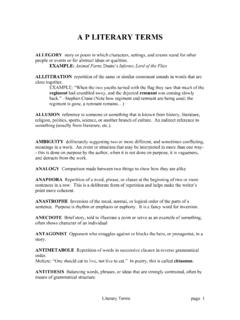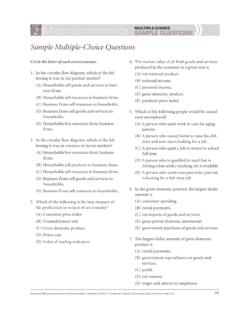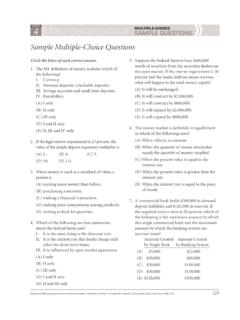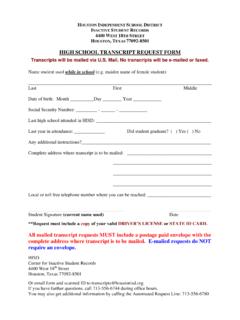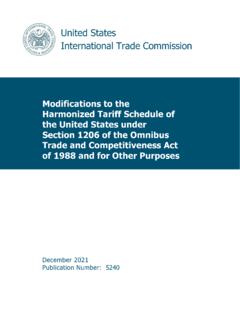Transcription of EUROPEAN EXPLORATION AND COLONIZATION OF AMERICA …
1 EUROPEAN EXPLORATION AND COLONIZATION OF AMERICA Houston ISD Curriculum 2008 Secondary Social Studies Country Reasons for EXPLORATION Areas Explored (Areas of Greatest Influence) Negative Consequences Positive and Lasting Contributions to American Life Spain 1. Wealth & Power Asian trade , gold & silver, land & colonies 2. Religion convert Native Americans to Roman Catholic Church 3. Nationalism Competition with Italy, Portugal, fame & glory 4. Renaissance spirit of curiosity, adventure, etc. West Indies Mexico Florida Southwest Texas Central AMERICA South AMERICA Slavery (Native Americans & Africans) Diseases (killed millions of Native Americans) Forced Native Americans to convert to Roman Catholic Church, work as slaves, and give up gold & silver Authoritarian government and rigid social class system Introduced guns and armor Language (Place names Rio Grande, San Antonio, Florida.)
2 Common words patio, canyon, rodeo, hurricane, cafeteria) Religion (Roman Catholic Church) Ranching Industry (first horses, cattle) Mining Industry Farm Crops (wheat, sugar cane, citrus fruits) Architecture (buildings with central open courtyards or patios; flat roofs) France 1. Wealth & Power looking for the Northwest Passage to Asia, fur trade , land & colonies 2. Religion convert Native Americans to the Roman Catholic Church 3. Nationalism competition with Spain and England, fame & glory 4.
3 Renaissance spirit of curiosity, adventure, etc. St. Lawrence River (Canada) Great Lakes Mississippi River (Louisiana) Diseases (killed millions of Native Americans) Peasant system of farming (rich landlords lived in France owned farms in Canada, poor workers sent from France to work on them) Fur trade (fur traders lived peacefully in Native American villages, but they traded guns for furs and incited Native Americans to attack English colonies; millions of animals killed for fur) Guns Language (Place names Louisiana, New Orleans, Baton Rouge; common words--prairie) Religion (Roman Catholic Church) (missionaries lived peacefully in Native American villages) Architecture (2 story houses with verandahs covered porches.)
4 Wrought iron railings) Respect for Native American culture EUROPEAN EXPLORATION AND COLONIZATION OF AMERICA Houston ISD Curriculum 2008 Secondary Social Studies Country Reasons for EXPLORATION Areas Explored (Areas of Greatest Influence) Negative Consequences Positive and Lasting Contributions to American Life England 1. Wealth & Power looking for the Northwest Passage to Asia, fishing grounds, fur & lumber trade , land & colonies 2. Religion freedom of religion in different Protestant churches 3.
5 Nationalism competition with Spain, France, & Netherlands, fame & glory 4. Renaissance spirit of curiosity, adventure, etc. 5. Conflicts with government (escaping from a government and/or religion to live according their own beliefs) Atlantic Coast of North AMERICA (13 English colonies) Hudson Bay in Canada Diseases (killed millions of Native Americans) Conflicts with Native Americans taking land, fencing fields, cutting down trees, & killing game Importing African slaves Use of African & EUROPEAN indentured servants Tobacco industry Guns American concepts of law & government (self-government, representative assemblies, written laws, equality under the law, religious freedom, right of people to disagree with their government, etc.)
6 Language (major language of ) Religion (religious diversity, many Protestant churches) Cash crop agriculture (people owning and working their own land, growing crops to sell for profit) Joint-stock companies (basic organization of business corporations today) Architecture (standard 1 or 2 story house, sloped roof, wooden boards or brick) Nether- Lands (Dutch) 1. Wealth & Power looking for the Northwest Passage to Asia, fur trade , land & colonies 2. Religion (Roman Catholic Church) 3. Nationalism competition with England, Spain, fame & glory 4.
7 Renaissance spirit of curiosity, adventure, etc. Hudson River in New York (founded New York City known as the city of New Amsterdam in the New Netherlands) Diseases (killed millions of Native Americans) Fur trade which led to animal slaughter Guns Language (Place names Harlem, Bronx, Catskill Mts.; common words cookie, boss, spook) Architecture (brick houses with steep roofs, stair-step gables along the roof, brightly colored wood trim) Name: _____ Date: _____ Period: _____ REASONS FOR EUROPEAN EXPLORATION AND COLONIZATION DIRECTIONS: Use the chart EUROPEAN EXPLORATION & COLONIZATION of AMERICA to complete the paragraphs below.
8 Reasons for EXPLORATION : All of the EUROPEAN nations ( _____, _____, _____, and the Netherlands) came to AMERICA for the same 4 major reasons: _____& power, _____, _____, and the _____spirit of curiosity and adventure. Europeans hoped to acquire wealth and power through reaching the continent of _____and trading. Even after learning that AMERICA was a new continent, explorers kept looking for a _____Passage to Asia. In the meantime, Europeans looked for wealth by finding _____and silver, engaging in the _____trade, and claiming land & _____.
9 France, Spain, and the Netherlands also wanted to convert Native Americans to the _____ _____church. The English came to have freedom of religion in many different _____ churches. The English were also the only country to allow explorers and colonists to come to AMERICA who were in _____with their government, coming to AMERICA to live differently than they could in Europe. Areas Explored: Spain claimed most the southern part of the United States - _____ , _____ , the Southwestern as well as lands further south - Mexico, _____ AMERICA , _____ AMERICA and the islands of the _____ _____.
10 France (looking for the Northwest Passage) explored along inland waterways: the _____ River, the _____ Lakes, and the _____ River. England claimed the _____Coast and _____Bay in Canada. The Dutch claimed the _____River in the state of _____. (This put the Dutch in the middle of the _____ colonies.) (Think about it: Which explorer worked for the both the Dutch and the English? _____). Negative Consequences: All of the Europeans brought _____ (chicken pox, measles, flu, small pox) to AMERICA which killed 90% of the Native American population.
